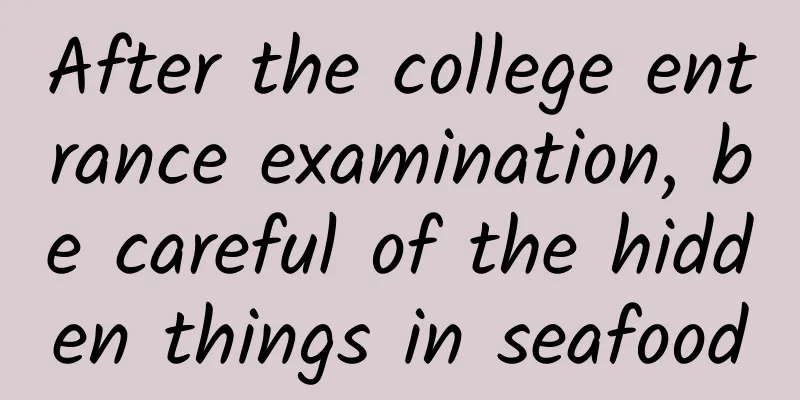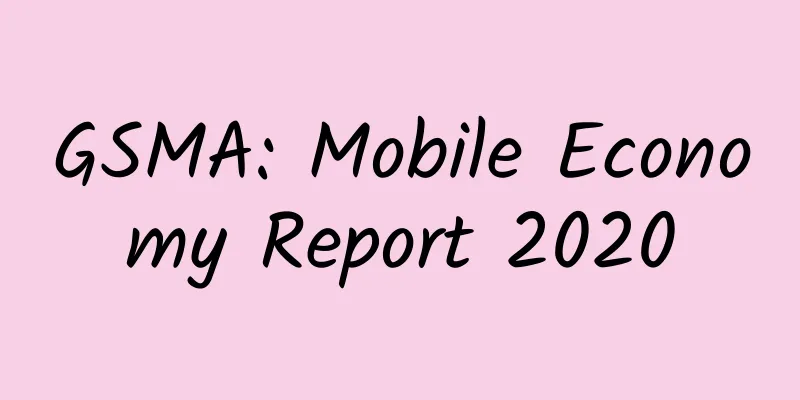Another asteroid is about to hit the Earth? The truth...

|
gossip "An asteroid will hit the earth in seven years, causing the destruction of humanity?" Some people on the Internet said that an asteroid numbered 2024 YR4 will hit the Earth on December 22, 2032. Its power is comparable to the asteroid that caused the extinction of dinosaurs and may lead to the extinction of mankind. Many people are panicked by this. Rumor Analysis This statement is not rigorous. First, due to the current observation results, there are still errors in the prediction of the asteroid's orbit. With the further improvement of the observation results, the possibility of a collision can be determined. Secondly, the diameter of the asteroid is only 40 to 90 meters, which is not enough to cause the extinction of mankind. Moreover, humans are not helpless in this regard. At present, there is the possibility of active defense. Therefore, we can keep paying attention to this, but there is no need to panic. Recently, a newly discovered asteroid has been trending on social media. The reason for its popularity is very scary: this asteroid numbered 2024 YR4 may hit the Earth in 7 years! By February 7, 2025, the probability of impact is estimated to be 2.2%. How high is this probability, and do we need to panic about it? Then let's talk about how to understand this number and the possible impact behind it. 2.2% chance of impact, How is it calculated? Let's talk about the name of this asteroid first. The code name "2024YR4" seems full of mystery, but the naming in the field of astronomy has always been "the abbreviation is unclear and the full name is really uncreative." These characters simply mean "the 117th asteroid discovered in the second half of December 2024 " ... 2024 is the year, and YR4 is the number used in astronomy to indicate the order of discovery of asteroids (see the figure below). Y represents the second half of December "R" represents 17, "4" represents 4 rounds (25 numbers per round), a total of 17+4×25=117 Edit Tab Let's talk about the 2.2% chance of collision. This probability is equivalent to 23 pairs of socks of different patterns scattered in a dark box, and you pick up two at random, and they happen to be a pair. If this example seems too complicated, let's just look at the numbers: saying that there may be a 2.2% chance of collision is equivalent to saying that there is no collision 97.8%, so there is no need to worry too much now. Let's talk about how this number is estimated. The scientific community uses a statistical method called "Monte Carlo" to add random uncertainty to the known asteroid orbit data. After a large number of simulations, they can get the position distribution of the asteroid crossing the Earth's orbit on December 22, 2032. European Space Agency (ESA) simulation statistics, source: European Space Agency This picture is a simulation statistical result of the European Space Agency, using observation data as of February 6, 2025. The perspective of the picture is "looking down" on the Earth-Moon system. The blue dot is the Earth, and the gray circle is the orbit of the Moon. The most eye-catching red line is composed of many points, each of which represents a possible position where an asteroid crosses the orbital plane of the Earth around the Sun. The 2.2% probability is basically the diameter of the Earth divided by the length of this red line, and then slightly increased - because the points on the red line are not uniform, and the closer to the middle area, the denser it is. Why is the risk of collision increasing? Readers who have been following this asteroid must remember that the initial probability of impact for this asteroid was 1.2%, but now it has increased to 2.2%. What's going on? Will this number continue to rise in the future? The numerical adjustment is based on the observation results. The longer the observation data is, the more data is obtained, and the more certain the orbit calculation is. For example, in the two elliptical orbits in the figure below, if the asteroid only moves the orange part during the observation period, it is difficult for us to determine how big the circle will be. If the observation arc is very short, it is possible to calculate a completely wrong orbit or even "lose" the asteroid. The length of the observation arc affects the orbit calculation, drawn by the author For example, 2004 PR107 initially had only one day of observation data and was mistakenly estimated to be orbiting beyond Neptune. It was not surprisingly "lost" afterwards. It was not until 2012 that it reappeared and was identified as a new asteroid. This time the observation time was longer, and it was discovered that it is a main-belt asteroid with an orbit only slightly farther than Mars. For 2024 YR4, as subsequent observations obtain more and more accurate data, the uncertainty of its orbit will be smaller, and the red line in the statistical simulation diagram will be shorter. **There will be two directions of development in the end: one is that the red line becomes shorter and shorter, but it always presses on the earth, and the probability of impact becomes higher and higher; the other is that the red line shortens or deviates, causing the earth to fall out, and the probability of impact suddenly returns to zero. The former is definitely bad news, indicating that the asteroid is increasingly likely to hit the earth, while the latter is a relief: we have dodged a catastrophe after all. What would happen if a collision really happened? According to current data, if this asteroid still hits the Earth, it will rush over from the inner circle of the Earth's orbit and hit a point on the red line on the map. The closest location to China is the border of Bangladesh/India/Myanmar and other countries. The area where 2024 YR4 may impact. Image source: Sky&Telescope In addition to the probability of impact, the size of an asteroid is also an important indicator because it represents the destructive power of an asteroid. For example, countless meteoroids rush into the Earth's atmosphere every day, but they are as fine as gravel and have no effect on us on the ground. So, if unfortunately 2024 YR4 eventually hits the Earth, how destructive will it be? At present, the size of this asteroid is still an estimate. It is too small and too dim, with a current apparent magnitude of only 24 (the larger the number, the darker the object), which is equivalent to looking at a candle 15,000 kilometers away. Through spectral observations, scientists believe that it is likely to be an S or L type asteroid mainly composed of silicates. Based on the typical albedo of this type of asteroid, it is estimated that its size is about 40-90 meters, which is basically the same as the asteroid that hit Siberia in 1908 and caused the Tunguska explosion. What should we do with 2024 YR4? When it comes to the risk of asteroid impact, there is a "Turin Index" that is used to assess the risk of near-Earth asteroids hitting the Earth. The Turin Index is related to the probability of impact and the size of the asteroid, ranging from 0 to 10, with the larger the number, the more dangerous it is. Based on the known situation of 2024 YR4, it is rated as level 3, which means that it has a probability of more than 1% to cause a small-scale collision and damage. If the asteroid will approach the Earth within 10 years, the public and relevant departments must be notified. Turin Index (2024 YR4 danger level is 3), source Wikipedia Next, how should we deal with this annoying guy 2024 YR4 in the next 7 years or so? Astronomers will continue to track and observe this asteroid, obtain longer observation arcs, more accurate data, and reduce the uncertainty in simulation calculations, and strive to make the "boots drop as soon as possible" regardless of good or bad. However, this asteroid is gradually moving away from us (it will not meet again until December 2028, and then there is a potential impact in 2032), so it will become dimmer and more difficult to observe. The telescope that initially discovered it had an aperture of only half a meter, so subsequent optical observations will require a 10-meter telescope. The Webb Space Telescope is also preparing to conduct follow-up observations of the asteroid in the coming months to determine its albedo and size. The next return of the asteroid in 2028 is also a good opportunity to confirm various data, and hopefully the probability of impact can be reduced to zero as soon as possible. The distant 2024 YR4 is difficult to see directly, but astronomers can also use occultation to observe this asteroid indirectly. Since distant stars are just dots in the telescope, the asteroid will temporarily block these star "dots" when passing by, so the stars that the asteroid occults in sequence can mark its orbit. The size of the asteroid can be calculated by the length of the occultation. The direct observation object of the occultation is the star, so the telescope does not need to be upgraded. DART mission, image source: NASA What if 2024 YR4 finally falls into the embrace of the Earth? Current technology has not yet formed a mature "active defense" plan, and the most reliable thing for humans is ground evacuation. However, humans have proven the feasibility of active defense: the 2022 DART mission successfully hit the target "twin asteroid" with an impactor, shortening its orbital period by 32 minutes. Technology is developing rapidly, and by 2032, this asteroid may "astonish the world." In the long game between human civilization and the universe, asteroid impacts have always been the "Sword of Damocles" hanging over our heads. my country has begun to deploy the "Near-Earth Asteroid Defense System". You may have noticed that the National Defense Science and Technology Industry Bureau's Major Special Project Center has set up a "Planetary Defense Post" to carry out monitoring and early warning research on near-Earth asteroids. Scientists around the world are collaborating with "planetary defense" as a link. This joint action concerning the fate of mankind is not only an arena for cutting-edge technology, but also a protective line for the survival of civilization. Looking in the mirror of rumors Asteroid impacts on the Earth are one of the most common rumors. Many rumors use difficult terms and provide seemingly accurate data to attract attention. When dealing with such sensational information, we should first pay attention to the scientific explanations behind the data in these information, and pay attention to whether there are complete background explanations and whether the fact that scientists continue to monitor and correct the data is ignored. As long as we remain rational, pay attention to the interpretations of authoritative astronomical institutions and professional media, and do not be misled by exaggerated or out-of-context information, we will not be easily affected by such rumors. Planning and production Author: Qu Jiong science writer Review|Liu Qian, Researcher at Beijing Planetarium, Director of Science Films |
<<: Lost 15,000 yuan after the phone suddenly went black! Police: Turn off this function immediately
>>: Unlocking the "treasure bowl" of oil and gas: Providing a "Chinese sample" for global shale gas
Recommend
12 Mobile App Development Trends to Watch in 2019
2019 is shaping up to be a busy year for mobile a...
Case Analysis | 6 Strategies to Unravel the Addictive Gameplay of Pinduoduo
Did you shop on Double Eleven? Is your shopping c...
How much does it cost to join the Shangluo Coupon Mini Program? What is the price for joining the Shangluo Coupon Mini Program?
How much does it cost to join a coupon mini progr...
Silicon Valley Guide: How to systematically improve user retention?
Pinterest is one of the most popular social platf...
GITC 2014: Elites gather to soar to the sky
[[120831]] In recent years, with the support of n...
Why are many antibiotics ineffective against mycoplasma? ——Eight questions about "walking pneumonia"
Due to drug resistance, the treatment of mycoplas...
Is there glass for building a lunar base? Chinese scientists have made the latest discovery of lunar soil
There is glass on the moon! On the 7th, the repor...
Astronomical wonders: The Perseverance rover captured a clear and beautiful solar eclipse on Mars!
A solar eclipse on Earth is caused by the Earth&#...
NIO plans to issue 160 million American depositary shares at a price range of $6.25 to $8.25
According to foreign media reports, NIO submitted...
Which industries are suitable for information flow?
Question 1: I have a question: Regarding the prob...
A tough guy DIYs a powered exoskeleton and can lift 77 kg with ease
DIY madman The Hacksmith has done something extra...
Definitely collect it! The complete version of 4P, 4C, 4S, 4R, 4V, 4I in marketing
1. The connotation and application of 4P: product...
Douyin super useful information: a complete guide from getting started to operation!
"Two Weibo and One Douyin" have become ...
3D Cloud Disco AI Unmanned Live Cartoon Cracked Version, Contains Operation Video Detailed Tutorial
3D Cloud Disco AI Unmanned Live Cartoon Cracked V...
Take some melatonin when you can't sleep? 4 misunderstandings about insomnia medication, experts from West China University of Political Science and Law urge you to be cautious!
Facing the epidemic, Chengdu people are very stub...









